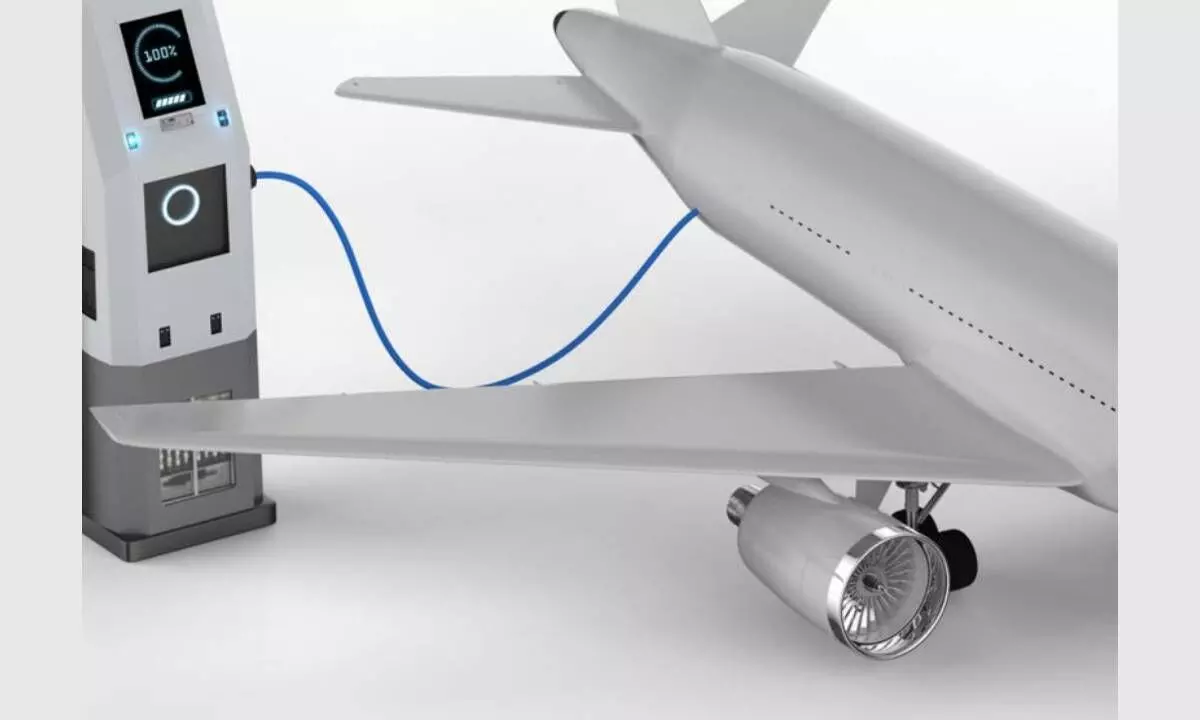The future of electric aircraft looks rosy and bright
The electric aircraft market is projected to be at over $22 billion in 15 years
image for illustrative purpose

Globally, flying makes up only 2.7% of global CO2 output, but experts expect it to grow ~300-700% by 2050. Efficiency improvements alone won’t prevent aviation from becoming responsible for close to a ¼ of total global #emissions in the next few decades. So what and where is the solution? Well one need not look beyond ‘electrification’.
While it’s true that most aircraft engines today run on fossil fuels like Jet A, Jet B, Avgas or diesel, many readers may be shocked (pun intended) to learn that electric technology will change the way we think about aircraft propulsion , sooner than later.
In fact, around 215 types of electric-powered aircraft are currently being developed worldwide, and industry observers say electric airplanes will be commonplace before the end of the next decade.
Unmanned Aerial Systems (UAS), Urban Air Mobility (UAM) platforms, other small passenger and cargo aircraft and – eventually – larger commercial passenger planes are all good candidates for electric and hybrid-electric propulsion architectures. But no matter what form these new aircraft take, they will be more efficient, quieter, safer and much greener than aircraft relying only on traditional internal combustion engines.
In contrast to propulsion systems built solely around an internal combustion engine, all-electric and hybrid-electric architectures utilize an electric motor. The motor can be the sole source of thrust or it can be used in combination with a conventional engine, by either providing another source of thrust or even a boost of power to the propulsion system during key stages of flight.
In addition to the motor, a fully-integrated electric propulsion system includes other critical components like motor controller hardware and software, gearboxes and cooling systems. This integrated system is known as an electric propulsion unit (EPU). Honeywell and DENSO are developing state-of-the-art solutions to meet not only today’s but tomorrow’s needs as well.
Using batteries to get around is a common tactic for building more climate-friendly transit. Electric cars accounted for about 13% of new car sales last year. Buses, trains, and ships could all be powered by batteries, at least in some scenarios.
But aviation will have a more difficult time following the same path, largely because batteries are heavy. Every ounce matters for vehicles that need to cruise thousands of feet in the air, and bigger planes traveling longer distances would need bigger, heavier batteries, which is why most efforts in electric aviation so far have focused on smaller aircraft.
Companies such as Safran S.A., Boeing, Airbus, and Raytheon have already revealed plans to re-conceptualize the modern airplane. At Boeing, engineers have created the SUGAR Volt concept plane, which combines electricity and fuel to power flight, much like a hybrid automobile does. Airbus recently unveiled a battery-powered aircraft called an E-Fan, which the company is hoping to sell in the recreational market, and eventually create commuter planes within 20 years. There is a lot at stake in the race to innovate: the electric aircraft market is projected to reach over $22 billion in the next 15 years.
In order for electric flight to really take-off and become commercial and recreational markets’ mainstream, it needs better batteries. Other industries have replaced traditional lead-acid batteries with lithium-ion batteries, which now power most of our laptops, phones, and electric cars. But in order to be aviation-compatible, the next generation of batteries needs to deliver a whopping amount of power while being simultaneously smaller, safer, and lighter than lithium-ion ones.
According to McKinsey, by 2030, the leading companies in the passenger Advanced Air Mobility (AAM) industry could have bigger fleets—and offer many more flights per day—than the world’s largest airlines. Flights will be shorter, averaging only 18 minutes, with fewer passengers on board (a maximum of six and the pilot). That cadence—large numbers of aircraft flying frequent, short flights—will create operational challenges.
‘Electrification’ of skies represents a significant step towards a sustainable and environmentally friendly aviation industry.
While challenges and limitations persist, the advancements in technology and the dedication of major players and startups indicate a promising future for electric aviation. As the world strives to reduce carbon emissions and combat climate change, electric planes offer a compelling solution that combines efficiency, reduced environmental impact, and improved air travel experience. The journey towards electrifying the skies has begun. It is poised to shape the future of air transportation.

